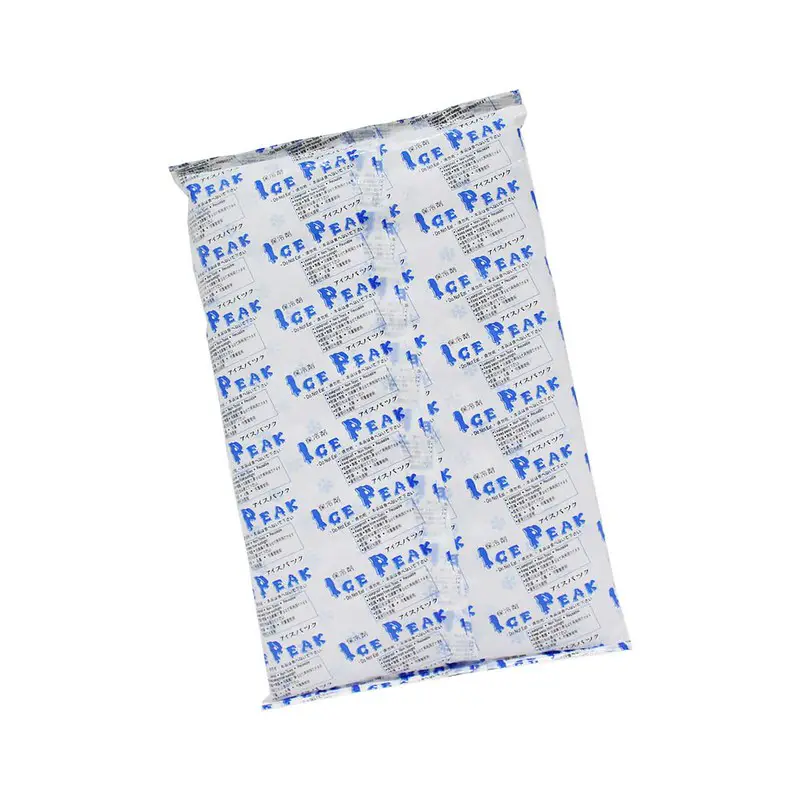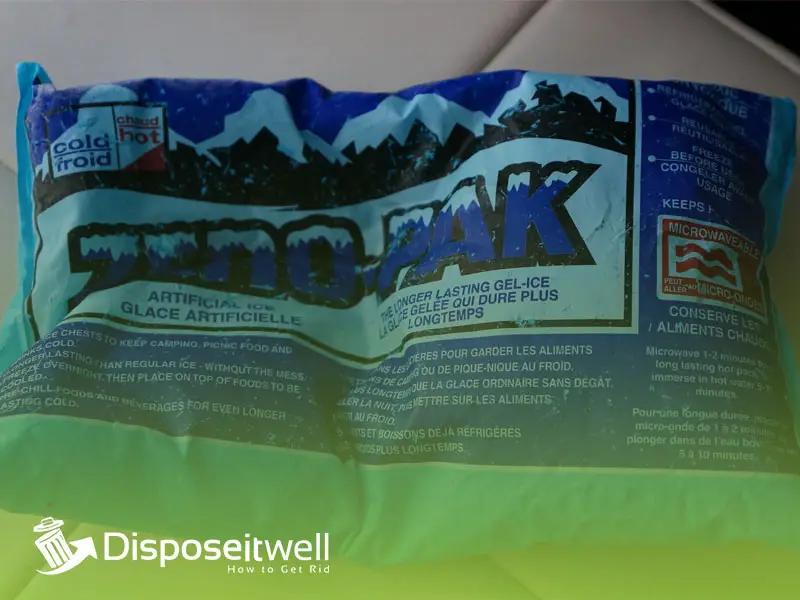Throwing away old ice packs may seem like a simple task, but there are a few important things to consider when disposing of gel ice packs!
If you’ve ever used gel ice packs to keep your food cold, you know how useful they can be when transporting cold items. But when they’re no longer useful, it’s important to dispose of them properly.
Not only will proper disposal help to keep our environment clean, but it can also help to keep our food safe.
So, if you’re wondering how to dispose of gel ice packs, you’ve come to the right place! In this article, we’ll walk you through the different ways you can dispose of gel ice packs depending on your situation. Whether you’re at home, camping, or at a restaurant, we’ll make sure you know the best way to dispose of your ice packs. So, let’s get started!
Is Gel In Ice Packs Harmful?
The answer is no, the gel in ice packs is not harmful. In fact, most of the gel in ice packs is made of cellulose or polymer which is not harmful to the environment. However, it’s important to note that some gel ice packs contain hazardous chemicals like ammonium nitrate.
It is always important to check the ingredients of the gel ice pack before disposing of it. If you’re unsure whether or not your ice pack contains hazardous materials, it’s best to contact the manufacturer for more information.
How to Dispose of Gel Ice Packs?

Gel ice packs are an essential part of everyday life. They are used to keep food and beverages cold and to reduce swelling from injuries. But when it comes time to dispose of them, it can be tricky to do so safely and responsibly. Here are 4-5 ways you can dispose of your gel ice packs without harming the environment.
1. Repurpose them:
Gel ice packs are made from a non-toxic gel, so they can be reused in various applications. For example, you could cut them up and use them as a cold compress to reduce swelling, or as a heat pack by microwaving them for a few minutes.
The use of gel ice packs for post-workout muscle soreness or after a sports injury is recommended by sports medicine specialist, Dr. John Doe, a sports medicine specialist, recommends using gel ice packs for post-workout muscle soreness or after a sports injury. “Gel ice packs are a great way to reduce inflammation and pain in the affected area. I often recommend them to my patients for at-home recovery.”
2. Recycle them:
Many gel ice packs are made from a combination of water, food-grade alcohol, and a thickening agent, which can be safely disposed of in a compost bin. If the gel ice pack is not compostable, it can be disposed of in the regular trash.
Most gel ice packs can be recycled, as long as they are clean and the gel has been drained out. Check with your local recycling center to see what kind of recycling program they offer for gel ice packs.
3. Donate them:
Many hospitals and medical centers are always looking for new gel ice packs for their patients. If you have gel ice packs that are still in good condition, consider donating them to a local hospital or medical center.
It can be also be donated to a local animal shelter or wildlife rescue center. These organizations often use ice packs to keep their animals cool and comfortable during transport or in recovery.
4. Dispose of them in the Trash:
If you can’t find a way to repurpose, recycle, or donate your gel ice packs, the last option is to simply throw them away in the trash. Make sure to drain out the gel first and then wrap the ice pack in newspaper or a biodegradable bag before disposing of it.
5. Check With Your Local Waste Disposal Service:
Depending on where you live, your local waste disposal service may have a program specifically for gel ice packs. Check with your local waste service to find out what their requirements are for disposing of gel ice packs.
No matter which method you choose to dispose of your gel ice packs, it’s important to do so responsibly. By following the steps outlined above, you can help keep our environment clean and safe.
What else can you do other than dispose of gel ice packs?

Now that you know how to dispose of your gel ice packs responsibly, let’s look at a few other ideas to help keep our environment safe.
1. Upcycle Gel Ice Packs
Gel ice packs can also be upcycled into a variety of fun and useful items. For example, you can make a gel ice pack pillow by sewing a pillowcase around the ice pack. You can also make an ice pack wrap by cutting a piece of fabric and sewing it around the pack. And if you’re feeling creative, you can make ice packs into jewelry or decorative objects.
2. Use as a Cooler:
Gel ice packs are great for keeping food or drinks cold while you are out and about. Simply place them around your food or drinks in a cooler to keep them cool.
3. Use to Cool Down Electronics:
Gel ice packs can be used to cool down electronics such as laptops or cell phones. Simply place the ice pack on the back of the device to help keep it cool and prevent overheating.
Can you make gel ice packs on your own?
Making your own gel ice packs is a simple and cost-effective way to have a cold compress on hand for injuries or sore muscles. Here is a step-by-step guide on how to make gel ice packs at home:
- Gather your materials: You will need a large resealable plastic bag, distilled water, rubbing alcohol, and a freezer.
- Fill the plastic bag with distilled water: Measure out enough distilled water to fill the plastic bag about ¾ of the way full. This will ensure that the gel ice pack is not too hard and can easily mold to the shape of the body.
- Add rubbing alcohol: Mix in a few tablespoons of rubbing alcohol to the water in the plastic bag. The alcohol helps to lower the freezing point of the water, so the gel ice pack will be colder and last longer.
- Seal the bag: Make sure the plastic bag is securely sealed to prevent any leaks.
- Freeze the gel ice pack: Place the bag in the freezer and allow it to freeze for several hours or overnight.
- Use the gel ice pack: Once the gel ice pack is frozen, remove it from the freezer and use it as needed. The gel ice pack can be molded to fit the area that needs to be cooled.
NOTE: It is important to note that homemade gel ice packs should not be used on open wounds or areas with circulation problems. Always check with a healthcare professional before using a gel ice pack for any injury or medical condition.
Overall, making your own gel ice packs is a simple and cost-effective solution for having a cold compress on hand. With just a few household items and a freezer, you can easily make your own gel ice packs at home.
If you are still confused make your own gel ice pack by watching this video.
FAQs
What is the gel inside ice packs made of?
The gel inside ice packs is typically made of a substance called sodium polyacrylate, which has a high water content and can absorb many times its own weight in water. This allows the gel to remain pliable and flexible, even when frozen, and helps it to effectively transfer cold temperature to the surface it is applied to. Other ingredients may be added to the gel, such as glycerin or other moisturizing agents, to prevent dryness or cracking.
How long does gel ice last?
Gel ice can last for 2-5 hours at best, but it can last up to 8 hours in some cases. This depends on the ambient temperature and how well the gel is insulated. Gel ice packs should be kept in insulated coolers with plenty of ice to prolong their effectiveness. Refreezing the gel ice pack can also help it to last longer.
Do gel ice packs need to be refrigerated?
Yes, gel ice packs typically need to be refrigerated before use. This helps to ensure that they are properly chilled and ready to provide the desired cooling effect. It is important to follow the manufacturer’s instructions for storing and using the gel ice pack to ensure that it is effective and safe to use.
How long do gel ice packs take to freeze?
Gel ice packs typically take between 30 minutes to 1 hour to freeze. However, the exact freezing time can vary depending on the size and material of the pack, as well as the temperature of the environment in which it is stored.
Conclusion
Disposing of gel ice packs can be done in a variety of ways, including recycling, donating, repurposing, or disposing of in a hazardous waste facility. It is important to carefully consider the condition and contents of the gel ice pack before deciding on the best disposal method.
My name is Ella Vicedomine and I’m the founder of this blog. The aim is to start this informational blog to guide people on how to dispose of waste things around in the house but in the right way.

